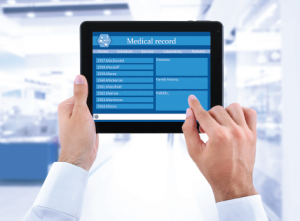
Africa Studio / shutterstock.com
The operations management team in healthcare practices is expected to have an effective coding compliance program in place that is continually evaluated and reevaluated. To accurately assess the program’s effectiveness, several outcome indicators must be measured, including error rates in the provider’s documentation and the electronic health record (EHR). Due to increased scrutiny by the Office of Inspector General (OIG), whose function is to supervise and guard the integrity of the Department of Health and Human Services (HHS) programs as well as protect the beneficiaries of these programs, physician practices must examine and evaluate risk areas.
The OIG report, Improper Payments for Evaluation and Management Services Cost Medicare Billions in 2010, gives clear instructions for the Centers for Medicare & Medicaid Services (CMS) to educate providers on coding and documentation requirements for E/M services, and to continue to have CMS contractors review E/M services billed for high-coding physicians as well as continuous review of E/M services that are paid in error.1 Due to the findings in the report, contractors initiated various programs to monitor documentation requirements for E/M services and, due to high error rates, began issuing prepayment reviews through the comprehensive error rate testing (CERT). Prepayment audits are costly to provider practices, because claims are not paid until they go through a comprehensive review. The OIG also indicated in the report that the most common documentation errors were caused by the copy-and-paste functionality in EHR systems.
In 2014, then OIG Inspector General Daniel Levinson suggested that guidelines should be developed for using the copy-and-paste feature in EHR technology. He further recommended that CMS direct contractors to use audit logs for investigations and provide additional guidance on detecting fraud in EHRs.2 The report and its findings called for the CMS to do everything in its power to prevent and stop the fraud and abuse that undermine the innovation of EHRs in the healthcare industry and risk overpayments from the Medicare budget.
Utilizing the copy-and-paste function for clinical documentation can save time for busy clinicians, but it also can pose a risk to the integrity of documentation. Physician practices, clinics and hospitals that utilize an EHR system should implement a copy-and-paste compliance plan and policy. To create an effective EHR policy, you need to understand how the OIG’s listed EHR features could result in poor data quality or fraud:
- Utilizing the copy-and-paste function, also known as cloning, allows the user to select information from one area and replicate it in another location.
- When information is added to a record using the copy-and-paste function, but the medical record is not updated appropriately or checked to ensure accuracy, inaccurate information may enter the medical record and create inappropriate charges that may be billed to patients and third-party payers.
- Inappropriate use of the copy-and-paste function can cause the system to inflate the level of claims and duplicate or create fraudulent claims.
- Over-documenting is the practice of inserting false or irrelevant documentation to create the appearance of support for billing a higher level of services.
- Some EHR systems’ built-in templates will auto-populate fields in the system.
- Other systems generate extensive documentation on the basis of a single click of a checkbox that, if not reviewed and appropriately amended by the provider, may be inaccurate.
- These features can produce information that suggests the practitioner performed more comprehensive services than were actually rendered.
Portions of the OIG’s definition of the copy-and-paste function are not necessarily 100% accurate, but the report and its classifications should not be ignored. Use of the copy-and-paste function with previous entries in the medical record in patient documentation is not a new occurrence; it is prevalent among practices. One study’s findings indicate that as many as 90% of physicians use this functionality in daily progress notes and that a majority of narrative notes contain copied text.3 Although the act of copying and pasting data is not always bad, practices should create a policy to improve the E/M error rates in their EHR system to reduce the compliance risk and protect the practice from unnecessary audit reviews. There are two Medicare contractor-created policies on how they view cloned documentation:
The EHR is not simply a chart or record, but a system for managing patient care. Proper documentation remains the best means of communicating patient health status & plans of care.
First Coast Services Options Inc.
Cloned documentation does not meet medical necessity requirements for coverage of services rendered due to the lack of specific, individual information. All documentation in the medical record must be specific to the patient and her/his situation at the time of the encounter. Cloning of documentation is considered a misrepresentation of the medical necessity requirement for coverage of services. Identification of this type of documentation will lead to denial of services for lack of medical necessity and recoupment of all overpayments made.
Cahaba Government Benefit Administrators LLC
The medical necessity of services performed must be documented in the medical record, and Cahaba would expect to see documentation that supports the medical necessity of the service and any changes and/or differences in the documentation of the history of present illness, review of system and physical examination.

